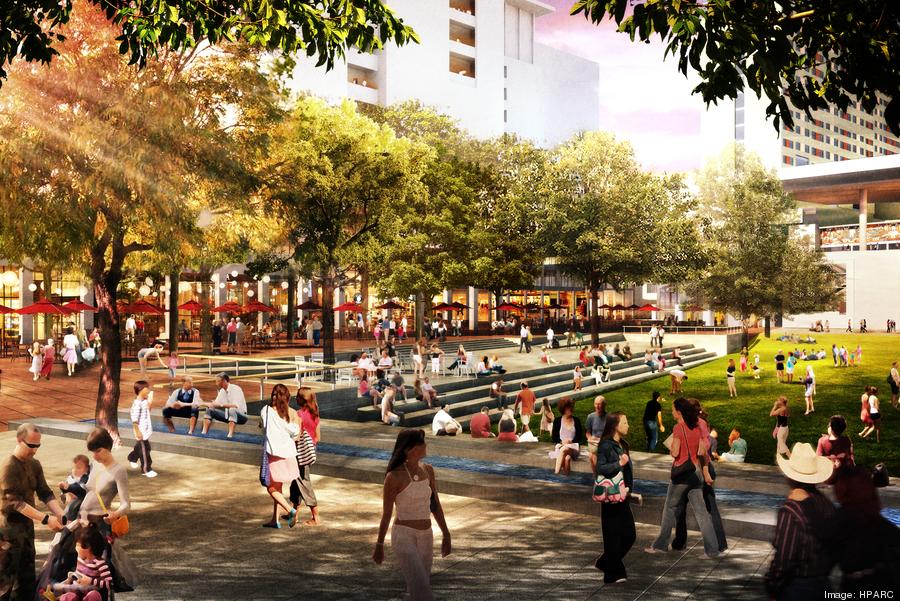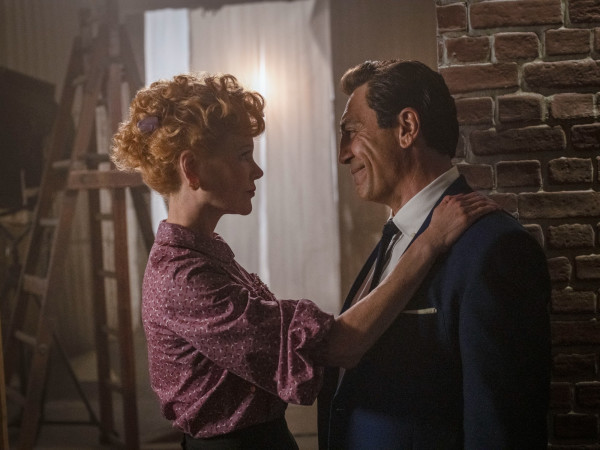Stakeholders counting on $27M infusion to complete key downtown redevelopment.
Category: San Antonio News
This category is for general business news stories local to San Antonio.
December 2021 continues to be unseasonably warm for San Antonio
In a month where we’re singing “Frosty the Snowman” and “Winter Wonderland,” it’s been anything but cold outside. In fact, other than this past weekend’s cold front, December 2021 has been unseasonably warm.
On Friday, December 10, San Antonio reached a high of 83°, with some areas in the 90s! And our average temperature is running 10.6° above normal. But as much as some may be hoping for colder weather, this week will feature high humidity and temps near 80°.
Humid & Gray This Week
After a weekend cold front, we’re seeing temperatures and humidity rise in and around San Antonio. This means that for the remainder of the week, mornings will feature patchy fog and drizzle. Other than a few peeks of sunshine, it’ll be difficult to shake the morning clouds, keeping skies mainly gray this week. Highs in the upper-70s will be much warmer than the seasonable average of 65°.
Shot of Cold This Weekend
Even though it will be warm this week, a cold front will blow through San Antonio and South Central Texas this weekend. Not only will this front bring colder weather, but it will also bring the opportunity for much-needed rain.
By Saturday morning, temps will drop into the 50s with showers likely. Sunday will be cloudy and a bit damp, too, with scattered showers possible. All-in-all this upcoming weekend will be more “Christmassy,” with damp and chilly conditions. We’ll finally see sunshine Monday.
How long will this upcoming weekend’s cold weather last? We anticipate at least a warm-up into the 60s next week.
7 Day Forecast
Stay In-The-Know
Keep up with your local weather forecast by downloading the KSAT Weather Authority App for Apple or Android. Be sure to allow notifications for updates – including livestreams from KSAT meteorologists.
Want to share weather pictures with the weather team? Submit photos and videos here, and your submission may get featured on KSAT.com or on air.
San Antonio gordita shop expands to the North Side
The restaurant celebrates the life and recipes of the co-founder’s mother and Torreòn native, Rosalinda Espinoza.
First two cases of COVID-19 omicron variant reported in Bexar County, health officials say
The first two known cases of the COVID-19 omicron variant have been detected in Bexar County, and local health officials are urging the public to get vaccinated.
The cases were discovered through genome testing at UT Health San Antonio, which is funded by San Antonio Metropolitan Health District and the Texas Department of State Health Services.
“Metro Health has been monitoring this situation the past few weeks as it has been unfolding around the globe, so we expected to see cases in Bexar County eventually,” said Claude A. Jacob, director of the San Antonio Metropolitan Health District. “Vaccination continues to be the best defense and protection against COVID-19. We recommend that individuals who are not vaccinated do so as soon as possible to help protect themselves from the omicron variant.”
Dr. Marjorie David, director of the Molecular Diagnostic Laboratory at UT Health San Antonio, said the omicron variant samples were collected from patients on Nov. 27 and Dec. 7. They were then sequenced from the UT Health San Antonio laboratory, as well as at University Health and Community Labs, David said.
Local health officials says vaccination and limiting exposure are the best way to fight against the spread of the coronavirus.
“As we continue to learn more from the rapidly evolving situation around the omicron variant, it is important to remember that vaccination and practices that limit potential exposure are still the best way for people to protect themselves and others from any COVID-19 variant,” said Dr. Bryan Alsip, executive vice president and chief medical officer for University Health.
Metro Health says early reports indicate that the omicron variant causes milder symptoms than the other variants, and vaccination protects against severe illness or death. It recommends full vaccination and a booster for anyone who is eligible to receive a shot.
The department says one in three people in San Antonio are still not fully vaccinated.
The Alamodome drive-thru clinic is open from noon to 8 p.m. Wednesday to Friday for anyone seeking a vaccine, whether it be their initial dose or booster. Click here to find a full list of Metro Health vaccination sites.
810-pound manatee hoisted from Texas canal in rare rescue
SeaWorld San Antonio along with several other conservation organizations came to the rescue of a stranded manatee in a Texas canal — a rare occurrence since manatees don’t usually live in the state.
The stranded sea cow was reported by a local fisherman on Dec. 3. He was underweight, tipping the scales at 810 pounds, and was suffering from acute cold stress syndrome due to the lack of suitable habitat conditions, according to SeaWorld San Antonio spokesperson Chuck Cureau.
Manatees are typically found in estuaries, canals, and slow-moving rivers, and are concentrated in Florida where the water is warmer.
“In the weeks coming, SeaWorld animal care specialists will monitor the manatee’s health and behavior which will indicate if and when it is safe to return him to his natural environment,” said Vice President of Zoological Operations at SeaWorld San Antonio Steve Aibel.
Animal care experts believe the manatee migrated from its natural habitat in search of food, which is diminishing due to the destruction of natural sea habitats in Florida, according to a press release from SeaWorld San Antonio.
The manatee was transported to SeaWorld San Antonio immediately after the rescue and is being rehabilitated before he’s released in Florida waters.
“Our rescue team is always ready and capable to answer the call and work with our partners in Texas when an animal is in need. The safe rescue of this manatee is very important but only the beginning of the work ahead of us,” said Aibel.
Manatees are warm-blooded and exposure to frigid water can cause bleaching of their skin, visible abscesses, unresolved sores, a heavy barnacle or algae load, lethargic behaviors and weight loss.
$3M penthouse above Hemisfair hits the market (slideshow)
Take a look inside a $3 million condo inside a downtown high-rise hotel.
Food Bank offers new program to help bridge digital divide
The program is made possible due to funding from Google Fiber to Feeding Texas.
Being the Ricardos soars with behind-the-scenes drama of I Love Lucy
Finding the right marriage of elements to make something successful is never easy. That applies to everything from making a recipe to making a TV or movie production to actual marriage. People on the outside of a bond that works well often don’t know just how much work it takes to make everything just right. The new film Being the Ricardos goes in depth on one extremely stressful week on the set of I Love…
‘Reversing extinction’: American Indians in Texas work to preserve forgotten history in Bexar County
For decades, the American Indians in Texas at the Spanish Colonial Missions have worked to preserve a history they believe has been mostly lost.
“Our work, what we’ve been doing now is reversing extinction,” said Ramon Vasquez, Executive Director, American Indians in Texas.
The nonprofit organization protects the culture and traditions of the Native American tribes and other indigenous people who lived in the missions, and in other parts of South Texas and Northern Mexico.
But Vasquez said much is unknown about their contributions to the Bexar County region.
According to Vasquez, archeological evidence shows the region has a 10,000-year history of occupation and was heavily populated. This is also the origin of the Tap Pilam Coahuiltecan Nation.
“Many of them are descendants of the Aboriginal people that came out of the missions of San Antonio,” said Vasquez. “As far back as there was mammoth walking on this ground, there were people living here in San Antonio.”
Vasquez adds that no other area in throughout the United States had the same concentration of missions.
“Primarily because of the rivers, right, that are associated to the San Antonio in Bexar County area,” said Vasquez. “That’s the main reason why we ended up with five missions.”
Many people are unaware that the Mission Indian families established some of the first ranches in Bexar and surrounding counties. They also were some of the first vendors in downtown plazas, selling produce, livestock and food. They also offered protection from other Native American tribes.
Vasquez noted that in the 1740s, the region was under attack by hundreds of Apaches, and Mission Indians fought to save La Villita, Canary Island families and presidio soldiers.
“They were the protectors of this area when there were raids,” said Vasquez. “We probably wouldn’t have a San Antonio. But it didn’t happen that way because 100 men came out and protected them.”
Years later, Mission Indians also participated in the first cattle drive to support the American Revolution.
“Those were vaqueros. Those were American Indians,” said Vasquez. “If they wouldn’t have made it, that cattle wouldn’t have made it and fed those soldiers.”
Despite these contributions, Vasquez said it’s been a struggle to get these stories told, but it’s something his organization will continue to fight for.
“How do we take a good look at what we’ve done historically with Native America, and change that narrative because are our children deserve, you know, to hear it,” said Vasquez.
According to the AIT website, there are nearly 27,000 American Indians in Bexar county, and the number only continues to grow.
“San Antonio is the 10th largest city in the country per capita with an American Indian population. We have our local Aboriginal people, but we also are becoming the home to other American Indians,” said Vasquez.
There have been strides in recent years to refocus on Native Americans, including indigenous people’s day which was adopted by the City of San Antonio in 2019 and by Bexar County in 2015.
“When you have city council members that are related to the Aboriginal people, that came out of the missions. We have to acknowledge that,” said Vasquez.
Still, It’s been slow progress. The goal of Vasquez’s organization is to keep educating and remove misconceptions about American Indians in Texas and the Tap Pilam Coahuiltecan Nation.
“San Antonio should celebrate that we do have deep roots to tribal communities that are still among us,” said Vasquez. “We don’t live on reservations because we have a whole different history than the rest of the country.”
And celebrate a history that is slowly being resurrected with inclusion and equity in mind.
“We can’t expect others to keep us relevant. We have to be the authors of our story,” said Vasquez.
Fastest Growing San Antonio-based Private Businesses
All businesses highlighted underwent a verification process conducted by Spirit of Texas Bank and Weaver to confirm their revenue numbers.













